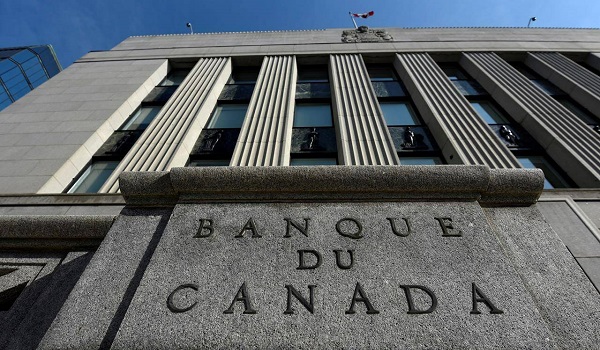Canadians “proactively” adjusting to higher interest rates, Bank of Canada says
The Bank of Canada says households can weather higher borrowing costs, but flagged rising asset valuations and debt serviceability among renters as risks to the financial outlook.
Canadians are “proactively” adjusting to higher interest rates, and the financial system “remains resilient,” the central bank said in its annual review of the system published Thursday. And while payments have risen for about half of the country’s mortgages, households have higher wages and savings, officials said, and they’re adjusting their spending patterns.
“Overall, the evidence suggest that households have the flexibility to continue servicing their debt at higher rates,” Senior Deputy Governor Carolyn Rogers said in prepared remarks.
Many households and businesses built up liquid assets during the pandemic, the bank said, and a “growing number” of mortgage borrowers with fixed-payment flexible rate mortgages are making lump sum payments ahead of renewal.
The lack of widespread financial stress gives policymakers room to focus their attention on inflation as they weigh when to start lowering borrowing costs. There’s less urgency for immediate or deep interest rate cuts if Canadian households can handle a higher-for-longer interest rate environment, especially amid reduced recession risks.
Still, non-mortgage borrowers with credit card and auto loan debt are struggling, the central bank said, and the proportion behind on payments has returned to or surpassed pre-pandemic levels. Just over one in 10 Canadians has a credit card balance of 80 per cent or more of their limit, the bank said, from a low of just under 8 per cent in 2021.
Policymakers also flagged “stretched” financial asset valuations in U.S. and Canadian equities and corporate bonds, saying they “may not properly reflect risks to the economic outlook and therefore increase the likelihood of a disorderly price correction.”
The bank said business insolvencies, which have grown sharply in recent months as generous pandemic-era loans expire, are “mainly the result of a catch-up effect,” though higher rates and slower demand are contributors to the increase.
Canadians are among the most indebted people in advanced countries, and elevated home prices and high borrowing costs have pushed housing affordability to the worst levels in decades. At the end of 2023, over a third of new mortgages had debt-service ratios greater than 25 per cent, the bank said, up from less than one-fifth before the pandemic.
Governor Tiff Macklem and his officials will next set rates on June 5, and the majority of economists in a Bloomberg survey see policymakers cutting the benchmark overnight rate to 4.75 per cent at that meeting. Markets put that odds of a cut at about two-thirds.
Underlying price pressures eased in the first three months of the year, but the central bank has said it wants to see further progress on disinflation before cutting rates. April’s CPI data, scheduled for release on May 21, will be an important determining factor for the governing council’s decision.
This article was first reported by BNN Bloomberg
















